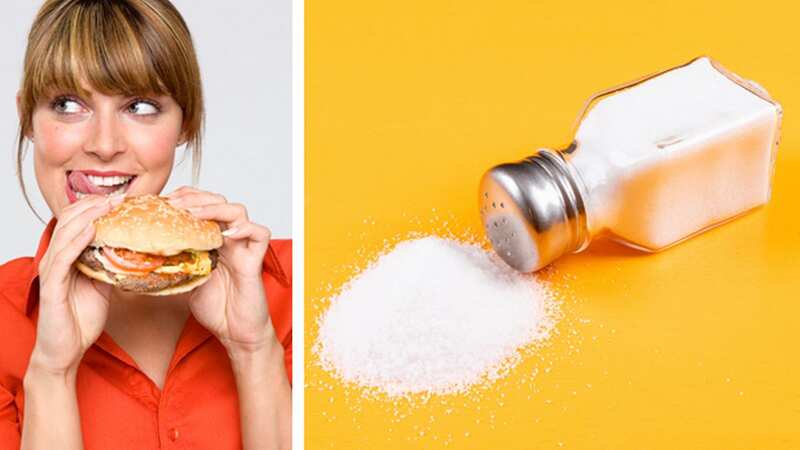Subtle sign in your hands could mean you’ve eaten too much salt

Most of us Brits eat too much salt every single day.
We should be having around 6g every 24 hours, but on average we're consistently wolfing down 8.4g instead - a whopping 40 per cent above the national guideline. Of course we need some salt in our diet, but too much of it is linked to high blood pressure, also known as hypertension. This is because the sodium in salt leads to more water in your blood vessels, causing higher pressure.
Around 28 per cent of adults in the UK have hypertension – that’s around 15 million adults. So where does all this unnecessary salt come from, you may ask. Perhaps surprisingly, it isn't from your salt shaker. Unfortunately, most of it is frustratingly hidden in foods such as bread, biscuits, breakfast cereals, sauces and condiments, explains Blood Pressure UK.
The charity says this effectively 'invisible' salt accounts for around three quarters of the salt people eat. So with this in mind, how can we tell we're consuming too much until it's too late? Well, your hands can actually reveal if you're guilty of having too much of the seasoning. Salt causes your body to hold onto water, which could leak into your tissues and cause swelling. Therefore if you've eaten too much of the white stuff, your fingers could become swollen. Once you eat excessive amounts of the popular condiment, your body retains extra sodium and increases the fluid outside of your cells.
Pippa Hill, nutritionist and founder of The Weight Loss Guru, told MailOnline: “This isn't an instant response after eating, but if in the next 24 hours of having eaten salty foods you notice swelling in these areas, it could be a link. It's best to seek medical advice if this is an ongoing occurrence, as it could be a sign of a more serious health concern.”
 Teachers, civil servants and train drivers walk out in biggest strike in decade
Teachers, civil servants and train drivers walk out in biggest strike in decade
Aside from your hands giving clues to excessive salt consumption, the resultant swelling - also known as oedema - could also strike in your ankles or feet. Oedema may become more prominent in these areas when sitting down for too long or on long journeys. Research, published in the journal Neurourology and Urodynamics, linked high daily salt intake to leg oedema.
How to cut down on salt
Thankfully, understanding food labels can help you choose foods that are not brimming with it. Blood Pressure UK recommends checking the nutrition information on food labels to see if it’s low, medium or high in salt. Then you can compare your go-to foods with other products to find the healthiest option.
Following these guidelines can help you understand the salt content in foods:
- Low - 0.3g salt or less per 100g
- Medium - 0.3-1.5g salt per 100g (these are usually fine to eat)
- High - 1.5g salt or more per 100g (try to avoid these or eat them only occasionally).
Many food products also have coloured labels on the front of their packaging, with red standing for high in salt, amber for medium, and green for low.
Read more similar news:
Comments:
comments powered by Disqus

































